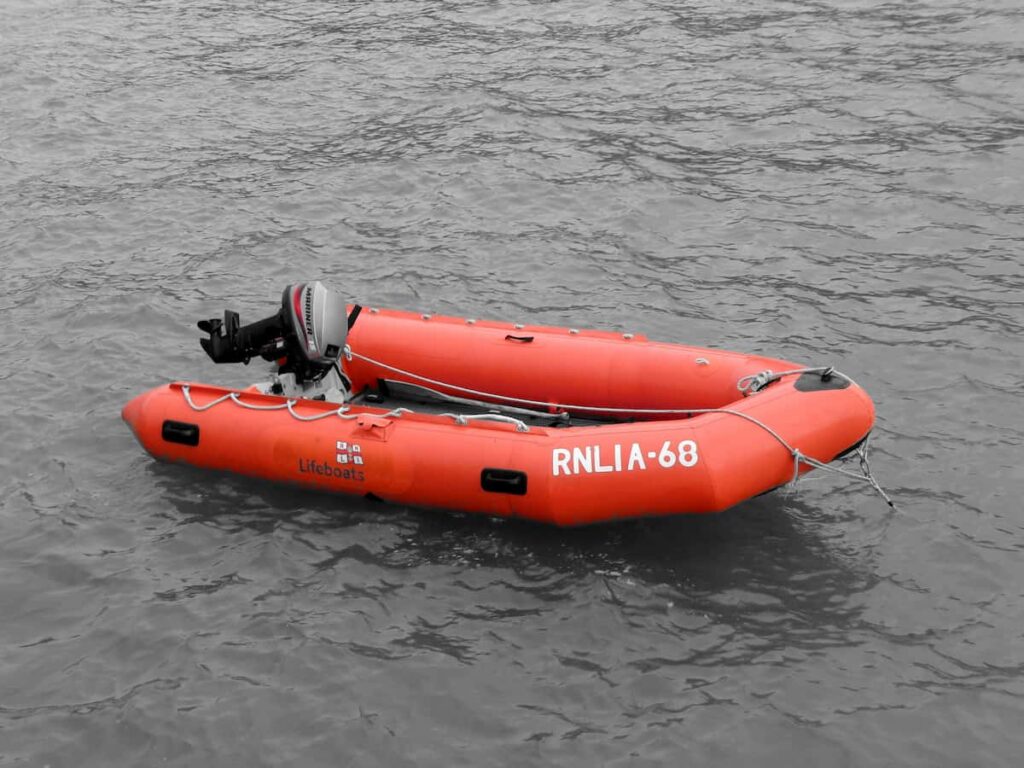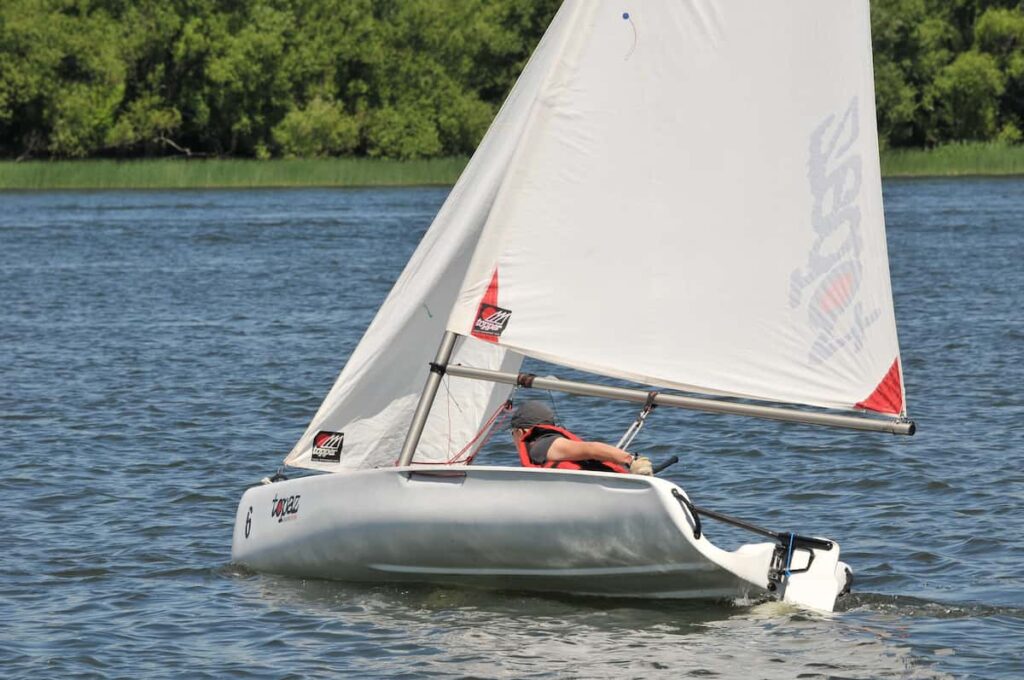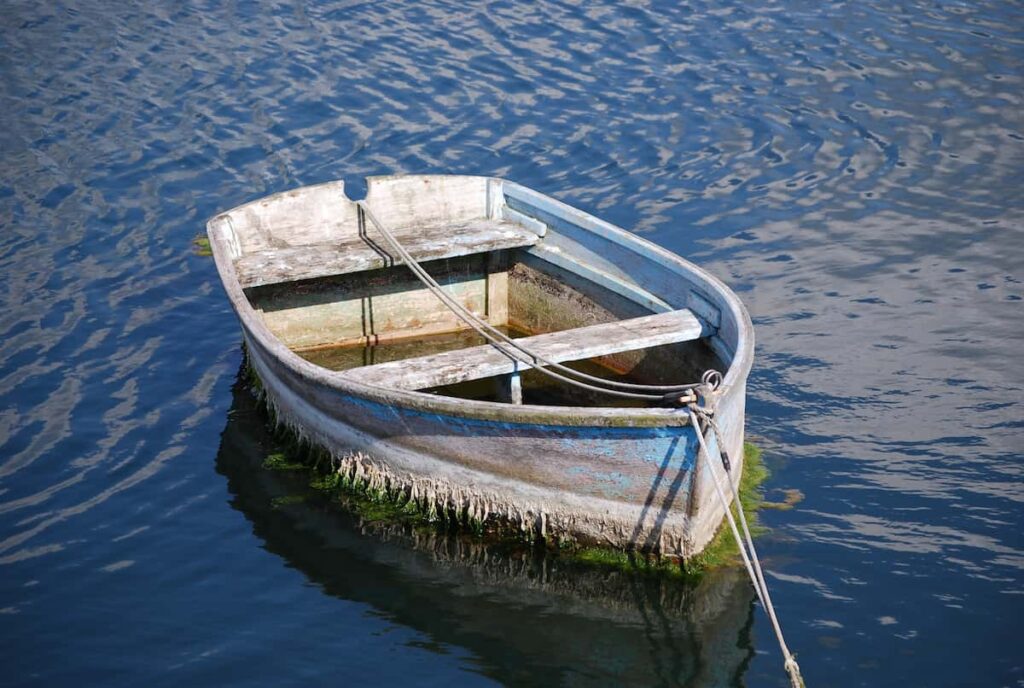Dinghy boats are small watercraft that are versatile and easy to transport. They can be used for fishing, watersports, or as a tender for larger boats. Dinghies come in various types, including inflatable, rigid, and foldable, and can be powered by motors, sails, or oars.
One of the advantages of dinghy boats is their portability. They can be easily stored and transported on a trailer or on the roof of a car. This makes them ideal for exploring remote waterways or for taking on vacations. Dinghies are also relatively affordable compared to larger boats, which makes them accessible to a wide range of boaters.

When choosing a dinghy boat, it’s important to consider factors such as size, weight, and intended use. Inflatable dinghies are lightweight and easy to store, but may not be as durable as rigid or foldable models. Similarly, a dinghy with a motor may be more convenient for longer trips, but may not be necessary for shorter excursions.
What is a Dinghy Boat?
A dinghy boat is a small watercraft that can be used for a variety of purposes. Dinghies can be rowed, sailed, or powered by a motor, depending on the design and intended use. These boats are often carried aboard larger vessels and used for transportation to and from shore, or for exploring shallow waters that larger boats cannot access.
Dinghies come in a variety of shapes and sizes, from inflatable rafts to rigid-hulled boats. Some are designed specifically for fishing, while others are meant for leisurely cruising or even racing. Dinghies can be made from a variety of materials, including wood, fiberglass, and aluminum, and can be customized with various features and accessories to suit the user’s needs.
One of the main advantages of a dinghy boat is its versatility. These small boats can be used for a wide range of activities, from fishing and exploring to water sports and transportation. They are also relatively easy to maneuver and can be operated by a single person, making them a popular choice for solo adventurers.
Overall, dinghy boats are a great option for anyone looking for a versatile, easy-to-use watercraft that can be used for a variety of purposes. Whether you’re looking to explore new waters, fish in shallow areas, or simply enjoy a leisurely cruise, a dinghy boat may be the perfect choice for you.

Types of Dinghy Boats
Rigid Inflatable Boats (RIBs)
Rigid Inflatable Boats (RIBs) are known for their durability and versatility, making them a popular choice among boaters. These boats are made with a solid hull and inflatable tubes around the perimeter, which provide buoyancy and stability. RIBs are often used for fishing, diving, and recreational activities, as well as for rescue and military operations. They come in a range of sizes, from small tenders to large offshore vessels.
Sailing Dinghies
Sailing dinghies are small boats that are designed to be sailed by one or two people. They are often used for racing or cruising, and can be made from a variety of materials, including wood, fiberglass, and aluminum. Dinghies come in a range of sizes and shapes, from simple prams to high-performance racing boats. Some popular types of sailing dinghies include Laser, Optimist, and 420.

Fishing Dinghies
Fishing dinghies are designed specifically for fishing. They are typically small, lightweight, and easy to maneuver, making them ideal for fishing in shallow waters or tight spaces. Many fishing dinghies come equipped with features like rod holders, live wells, and built-in coolers. Some popular types of fishing dinghies include Jon boats, skiffs, and bass boats.
Rowing Dinghies
Rowing dinghies are small boats that are propelled by oars. They are often used for recreational activities like exploring lakes and rivers, as well as for racing. Rowing dinghies come in a variety of styles, from traditional wooden boats to modern carbon fiber racing shells. Some popular types of rowing dinghies include Whitehall, wherry, and scull.

Features of a Dinghy Boat
Dinghy boats are small, lightweight watercraft that are typically under 15 feet in length. They come in a variety of designs and can be rowed with oars, sailed with a removable mast and boom, or powered by a low-horsepower outboard motor. The following are some of the key features of a dinghy boat:
- Lightweight: Dinghy boats are designed to be lightweight, making them easy to launch and pull from the water. Fiberglass and inflatable models are particularly lightweight, making them a popular choice among boaters.
- Easy to maneuver: Due to their small size, dinghy boats are super-maneuverable. They can easily navigate tight spaces and shallow waters, making them ideal for exploring coves and other hard-to-reach areas.
- Easy to repair: Dinghy boats are also easy to repair, with basic fiberglass or polymer patching. This makes them a practical choice for boaters who want a watercraft that is low-maintenance and easy to care for.
- Stable: Inflatable or rigid-bottom inflatables (RIBs) are often more stable than hard dinghies, which can be prone to tipping in choppy waters. This stability makes them a popular choice for families with young children or inexperienced boaters.
- Versatile: Dinghy boats are incredibly versatile and can be used for a wide range of activities, from fishing and exploring to water sports and transportation. They are also easy to store and transport, making them a popular choice among boaters who want a watercraft that is easy to take on the go.
In conclusion, dinghy boats are a great choice for boaters who want a small, lightweight watercraft that is easy to maneuver, repair, and transport. With their versatility and stability, they are a practical choice for a wide range of activities, from fishing and exploring to water sports and transportation.
Uses of a Dinghy Boat
Recreational Use
A dinghy boat is a popular choice for recreational activities such as exploring, swimming, and snorkeling. With its small size and maneuverability, it can easily access secluded coves and beaches that larger vessels cannot reach. Dinghy boats can also be used for leisurely cruises and picnics on the water.
Fishing Use
Dinghy boats are also commonly used for fishing. Their small size allows them to access shallow waters where fish are more abundant. They can also be used to reach offshore fishing spots that are too far to reach by the shore. Some dinghy boats come equipped with fishing rod holders and storage compartments for fishing gear.
Dinghy Sailing
Dinghy sailing is a popular sport that involves racing and cruising in small, single-handed or double-handed sailboats. Dinghy boats are lightweight and easy to handle, making them ideal for beginners and experienced sailors alike. They can be used in both calm and rough waters, providing an exciting and challenging experience for sailors.
Rescue Operations
Dinghy boats can be used for rescue operations in emergency situations. Their small size and maneuverability make them ideal for navigating through tight spaces and shallow waters. Dinghy boats can be used to rescue people who have fallen overboard or to transport injured individuals to shore.
Transportation
A dinghy boat can serve as a transportation vessel for people and supplies. It can be used to transport passengers and cargo to and from shore, as well as to shuttle people between larger vessels and shore. Dinghy boats are also commonly used as tenders for larger boats and yachts.
Maintenance Tips for Dinghy Boats
Dinghies are small boats that are easy to maintain, but they still require regular upkeep to ensure they stay in good condition. Here are some tips to help you keep your dinghy boat in top shape:
- Clean it regularly: Rinse your dinghy with fresh water after every use to remove any salt, sand or dirt that may have accumulated. Use a mild soap and water to clean the boat thoroughly once a month. Avoid using harsh chemicals or abrasive cleaners that could damage the boat’s surface.
- Protect it from the sun: Dinghy boats are susceptible to damage from UV rays. Cover your boat with a tarp or a boat cover when it’s not in use to protect it from the sun’s harmful rays. If you don’t have a cover, try to store your boat in a shaded area.
- Inspect it regularly: Check your dinghy for any signs of damage or wear and tear. Look for cracks, leaks, or holes in the hull, seams, or valves. Make sure the oarlocks, cleats, and other hardware are secure and functioning properly.
- Store it properly: When not in use, deflate your dinghy and store it in a dry, cool place. Keep it away from direct sunlight, heat sources, and sharp objects that could puncture the boat. If you need to store your dinghy for an extended period, consider using a boat storage bag to protect it from dust and moisture.
- Perform regular maintenance: Check your dinghy’s motor, if it has one, for any signs of wear and tear. Change the oil and spark plugs regularly, and follow the manufacturer’s recommended maintenance schedule. Lubricate the moving parts and tighten any loose bolts or screws.
By following these maintenance tips, you can extend the life of your dinghy boat and ensure that it’s always ready for your next adventure on the water.
Conclusion
Dinghy boats are versatile and affordable watercraft that can be used for a variety of purposes, including transportation, fishing, and racing. They come in different shapes and sizes, from inflatable to sailboats, and can be propelled by paddling, rowing, or sailing.
When considering purchasing a dinghy boat, it is important to keep in mind your specific needs and preferences. Affordability, ease of handling, and versatility are the main factors to consider. You should also think about the type of watersports or fishing you plan to do, and the conditions in which you will be using the dinghy.
While dinghy boats offer many benefits, there are also some disadvantages to consider. Storage and weather can be issues, and safety should always be a top priority. It is important to follow safety guidelines and wear appropriate gear when using a dinghy boat.
In conclusion, dinghy boats are a great option for those who want to enjoy the water without breaking the bank. With proper care and maintenance, a dinghy boat can provide years of fun and adventure on the water.
- Types of Gas Carriers as per IGC Code – April 22, 2025
- Wind-Assisted Propulsion Systems (WAPS): A Game Changer for Maritime Decarbonization – February 6, 2025
- 10 Boat Salvage Yards in California – January 25, 2025





